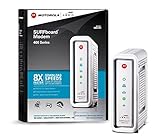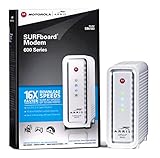As with virtually everything in the Linux / Unix universe, we believe in a strong "separation of concerns."
In the case of hardware, this means we think devices should generally perform a single function and do it very well. Many vendors will happily sell you a DSL Modem/WiFi Router combination unit. In most cases these perform neither function well. What is worse, when standards change [such as the move from WiFi N to WiFi AC or from DOCSIS 2.0 to 3.0 to (soon) 3.1], you have to reconfigure multiple services hosted within one unit when that unit is switched out. This tends to lead to more problems then when a single, isolated service needs to be upgraded.
Similarly, when hardware fails, when multiple services are consolidated in a single device, all computers may not only not be able to access the internet, but also not each other (i.e. the Local Area Network).
By choosing a separate modem, router and (possibly) switch, virtually all of these potential issues are eliminated except for an unlikely, "extreme" multi-device failure.
Modems coupled with a service offering from an Internet Service Provider (ISP) such as AT+T or Comcast are your first step to getting on the internet. If you are reading this, you probably already understand this!
In most cases, cable ISPs will charge ongoing rent (often about $10 to $15 per month!) for the broadband modems they supply you (please check your monthly bill).
Even worse, ISP-supplied modems are often not as efficient at delivering the speed for which you are paying. Often, rented modems are still DOCSIS 2 or at best DOCSIS 3.0 but usually with limited "channels" compared to what we recommend here. The WireCutter has a good article about these issues.



In most cases, telephone ISPs will provide a "free" modem when signing up for DSL service. However, if the modem fails you are generally responsible for acquiring a new unit. The phone company DSL modems are often more expensive (and/or slower) than what you can purchase on your own, such as those listed here.

WiFi Routers stand between your modem and your own network of computers. These devices allow you to connect more than one computer to the internet (using just one account) and allow for enhanced features such as wireless (using WiFi protocols) access.




As most small business or consumer-grade routers have only 4 (wired Ethernet) ports, in a setting with more than 4 computers you wish to physically connect to your network, you will also need at least one switch.
We recommend connecting all stationary computers with wiring. Wiring is generally more reliable, faster and more secure than using WiFi for connecting devices. In our extensive experience, wireless connections should be limited to mobile devices.
Finally, Power Over Ethernet (POE) switches can provide power to certain devices such as VOIP telephones or security cameras with a single wire for both data and power. This tends to make the installation tidier and less expensive.





These switches are also available in "easy smart" configurations all the way to 24 ports. The Easy Smart switches are designed specifically for small and medium business networks that require simple network management and basic features such as:
TP-LINK TL-SG1016DE 16-Port Gigabit Easy Smart Switch Other size switches linked on the same page include 5, 8, and 24 port models.
Other size switches linked on the same page include 5, 8, and 24 port models.
This "easy switch" is ideal to connect up to 4 devices to the network in any location (such as a private office) with only 1 network drop. [One of the 5 ports is used for the uplink.]
Cant find what you need among our recommendations?
Search for millions of products here: